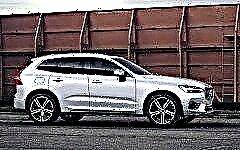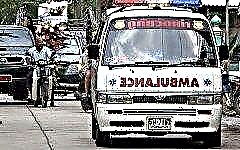
There are four main types of gearboxes: mechanical, automatic, robotic and variator. But how many people know about the types of manual transmission? About what they are, further in the review.
Three-shaft manual transmission

A classic manual transmission has multiple shafts with gears on them, all housed in a housing, also known as a crankcase. A three-shaft gearbox, for example, contains the following shafts:
- primary, also called master, receiving movement from the motor;
- secondary, it is also a slave, directly connected to the driveshaft;
- intermediate linking the first two.
The secondary shaft is located immediately behind the drive shaft, and between them there is a bearing. However, these shafts are not rigidly coupled to each other, and their rotations are independent.
As for the intermediate shaft, it is located under the first two, and parallel to them, and often with lateral displacement. This part is driven by the drive gear from the input shaft. Traditionally, intermediate gears are rigidly attached to the shaft of the same name and often form one product with it.
Well, the driven gears, saddled with the secondary shaft, can be either sliding - capable of rolling along its longitudinal grooves, or with constant engagement, rotating in one place and connected to the shaft by a moving blocking clutch.
By the way, in order for the device to work quieter, the teeth of the gears are often oblique. Although the manual transmission with three shafts is very heavy and cumbersome, it allows you to directly transfer energy from the primary shaft to the secondary, connecting them with a movable clutch.
Twin-shaft gearbox

It has only two shafts: the primary and the secondary, which are parallel to each other and interact with the participation of gears, which can be both sliding and permanent engagement, which are activated by movable couplings. In a box of this type, the shafts are not directly connected.
But it is simple and compact. Its efficiency when driving in the highest gear is not too high, but at intermediate gears this figure is higher due to the relatively small number of elements involved in the operation of the box.
The main advantage of such manual transmissions is the ability to combine several car chassis units into one power plant.
How many shafts are better
Today, most passenger cars are equipped with two-shaft manual transmissions, especially front-wheel drive ones. However, in trucks and SUVs, boxes with three shafts are most often found.
Sometimes, in order to reduce the dimensions of the car, a three- or four-shaft gearbox is installed in it, but it works as a two-shaft gearbox - the primary shaft contacts directly with one of several secondary ones. An intermediate shaft is not provided here.
Most of these devices have at least six forward speeds, such as the VW 0A5. Such boxes are not very long, which allows them to be perfectly located in the crowded engine compartment of vehicles with front and all-wheel drive, while characterized by the transverse placement of the motor.
Chain checkpoint
Not only gear wheels, but also gear chains can transfer power from the drive or intermediate shaft to the secondary. It was the chain structure that was especially widely supplied to premium cars, until it was replaced by a manual transmission with low-noise helical wheels.
In a chain-type box, one of the sprockets makes up a single product with the input shaft, and the other connected to it with a chain, traditionally located on the output shaft, could be tied to its place by means of a fixing clutch.
Planetary gearbox

Automotive multistage manual transmissions of this type can hardly be found. In addition, the manufacturing process is rather complicated.
However, the known two-stage planetary gearbox of the Ford T car, which has two degrees of freedom, the same number of forward speeds and one rear.
At the dawn of the automotive industry, small-stage devices of this type were assembled not only by Ford and not only for cars, but also for tractors, first of all. Modern gearboxes of the planetary type are equipped with a hydraulic drive and are no longer mechanical.
Sequential manual transmission
Sequence translated from Latin means "sequence". So in a sequential-type manual transmission, the steps are switched in turn. For this, rockers, joysticks or some petals at the steering wheel are used.
Such systems, as a rule, have automated clutch control, are often installed on motorcycles, and are also found in some sports cars.
So, for most of Russian-made motorcycles, a rocking pedal coupled to a copy shaft serves to change speeds. The downward impact on its front part leads to a decrease in speed by one level, the application of force to the rear or raising the front - an increase by the same amount. And "neutral" takes place between the 1st and 2nd stages.
The number of moves at the checkpoint
This value is determined by the number of engaging couplings or sliding gears installed in their place. For example, a three-way constant-mesh gearbox has 3 clutches, each of which is capable of driving two gears corresponding to certain stages. This means that such a gearbox can have 4-5 front steps, and in addition 1 rear one.
A box with 4 moves can connect 6-7 speeds for driving forward and one for driving backward, and in the absence of reverse gear, all 8 steps will be available for forward travel. The latter scheme is implemented mainly in agricultural machinery, where a special gearbox is used for driving backwards.
Synchronization in manual transmission

In order for the process of switching on the gear to take place more smoothly for the manual transmission, special devices called synchronizers are used. They prevent the engaging clutch from starting a particular gear until the peripheral speeds of that clutch and the desired gear are equalized. Such devices can be installed on any of the box shafts, and even on several.
Most modern passenger cars are equipped with synchronizers at least forward gears, and often reverse. However, it is difficult to equip heavy trucks and tractors, with the number of gears reaching sometimes twenty, with such devices. This promises a significant increase in the size, cost and weight of the box, as well as a significant reduction in its service life, since the synchronizer is one of the most wear-prone parts of the manual transmission.
Drivers driving such vehicles are specially trained in the technology of changing speeds on a transmission that does not have synchronizers.
In addition, manual transmissions without synchronizers are sometimes installed on modern sports cars and motorcycles, based on the following two arguments:
- unsynchronized gears can be shifted faster than synchronized gears;
- such boxes are more resistant to significant loads during racing.
By the way, in this kind of transport, as a rule, a cam mechanism for switching on speeds is involved, that is, the gear wheels are fixed on the shaft not with the same gear, but with a cam clutch. To some extent facilitates the driver's work and the sequential method of selecting steps.
Steps in a box

Based on the number of steps, there are several types of manual transmissions:
- two-stage: the first cars launched into mass production were sometimes equipped with a gearbox with 2 forward speeds and 1-2 reverse speeds, as was the case with the Ford T;
- three-stage: in the late 50s - early 60s of the last century, most of the cars were equipped with three steps, and signs were even displayed on Soviet roads that required a motorist approaching an intersection with a railway to switch from 3 to 2, and then for 1 gear;
- four-stage: in the United States, they were considered a sports element for a long time, and in Europe, from the beginning of the sixties, they began to equip most of the cars with them;
- five-speed: manual transmission with 4 main front speeds and an additional 5, increasing, appeared in the 60s of the last century, and became widespread in the 80s;
- six-speed: manual transmissions with six speeds appeared in the nineties, among them there could be one or two increasing;
- seven or more stepped: such manual transmissions have come into use in our century.
Semi-automatic transmissions with electronic shifting of speeds simply up and down, like on the Bugatti Veyron, offer an almost unlimited number of steps for use, giving the motorist the opportunity to comfortably control them. And yet, popular modern passenger cars are mostly content with 5-6.
Differences in the way of control
Usually, the choice of the desired stage in the manual transmission is made using a lever. True, sometimes to turn on the reverse gear, you also need to unlock a special fuse. Well, the location of the shifting lever itself and its attendant mechanisms may depend on the equipment of the car and fashion trends.
The main ways to control "mechanics" are as follows:
- using a lever located on the manual transmission housing, top or side;
- remote - with the installation of the shift knob on the floor, at the steering wheel or on the dashboard and pairing it with the checkpoint by means of connecting devices located outside the crankcase;
- hydraulic or electronic, used mainly when the gearbox is located far from the driver.
It remains to add that most manual transmissions installed on modern cars have the gear selector located directly on the floor, on the center console or at the bottom of the dashboard.
Conclusion
Manual transmission cars, previously dominant in Europe, are widely used in the post-Soviet space and dominate in less wealthy countries. The simplicity of the design, resistance to adverse factors and the long service life of such a transmission ensure its popularity among motorists and manufacturers. The adherents of "mechanics" are severe SUVs such as UAZ or Niva. And not only them.

|| list |
- Three-shaft manual transmission
- Twin-shaft gearbox
- How many shafts are better
- Chain checkpoint
- Planetary gearbox
- Sequential manual transmission
- The number of moves at the checkpoint
- Synchronization in manual transmission
- Steps in a box
- Differences in the way of control











